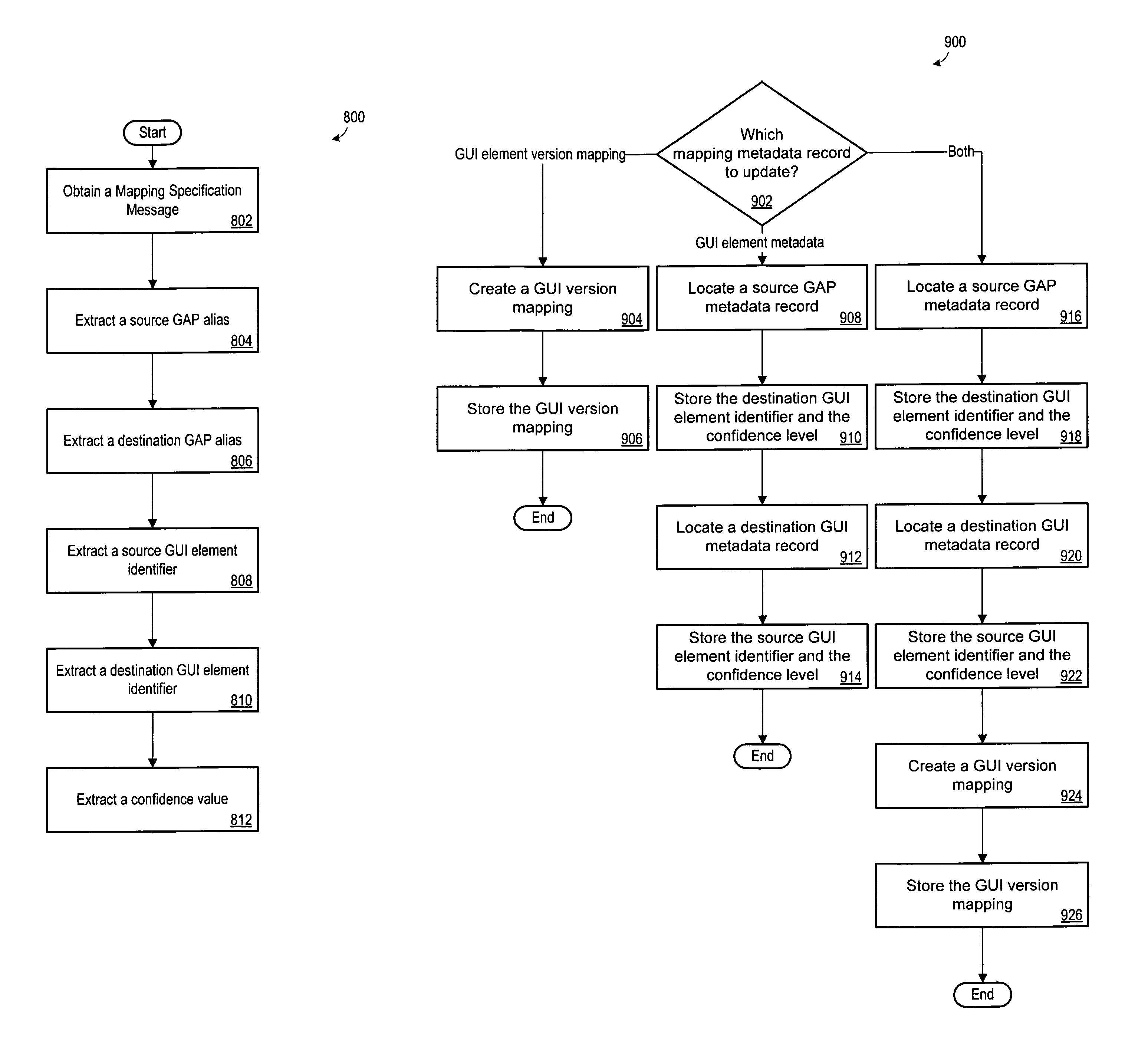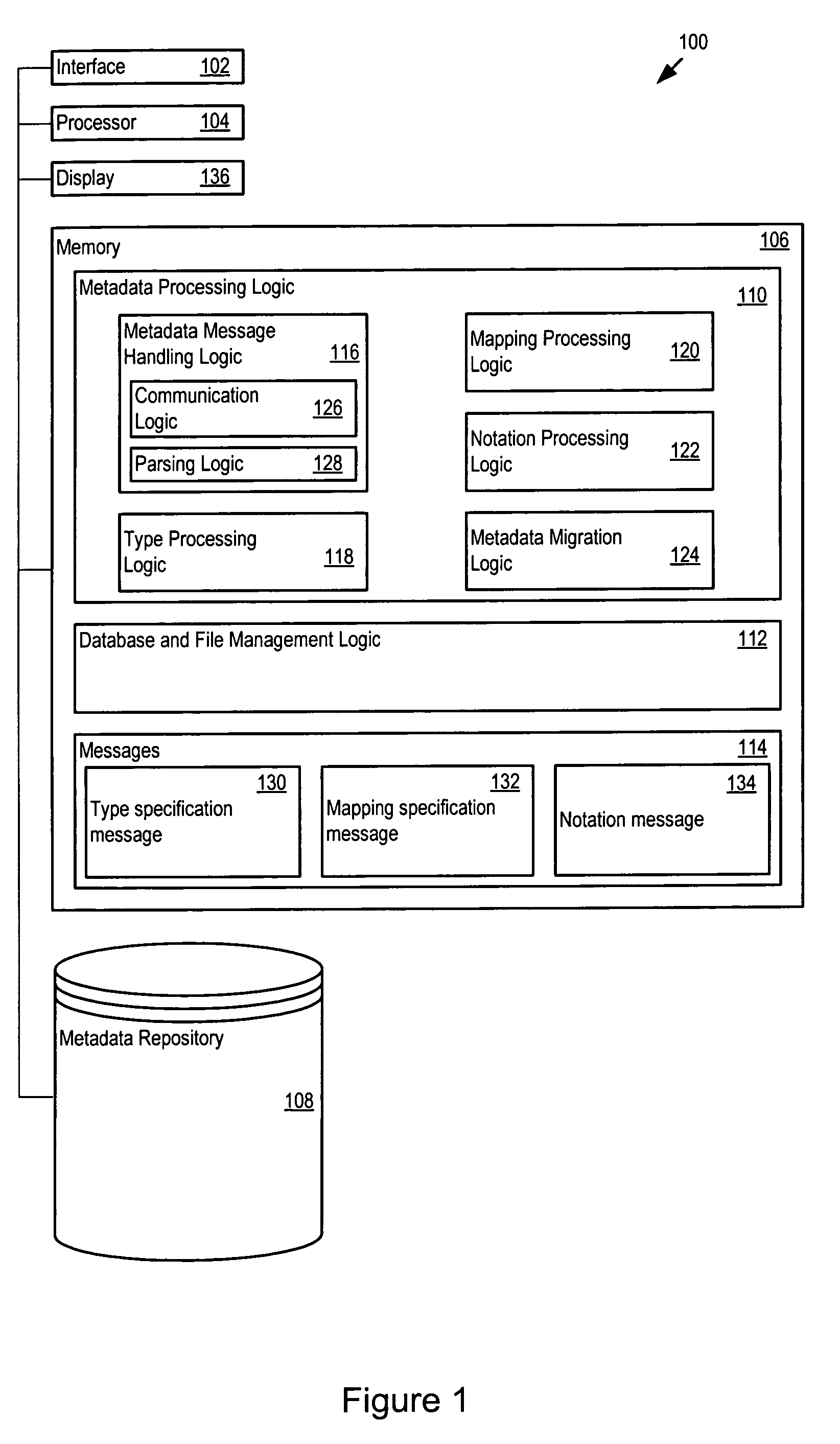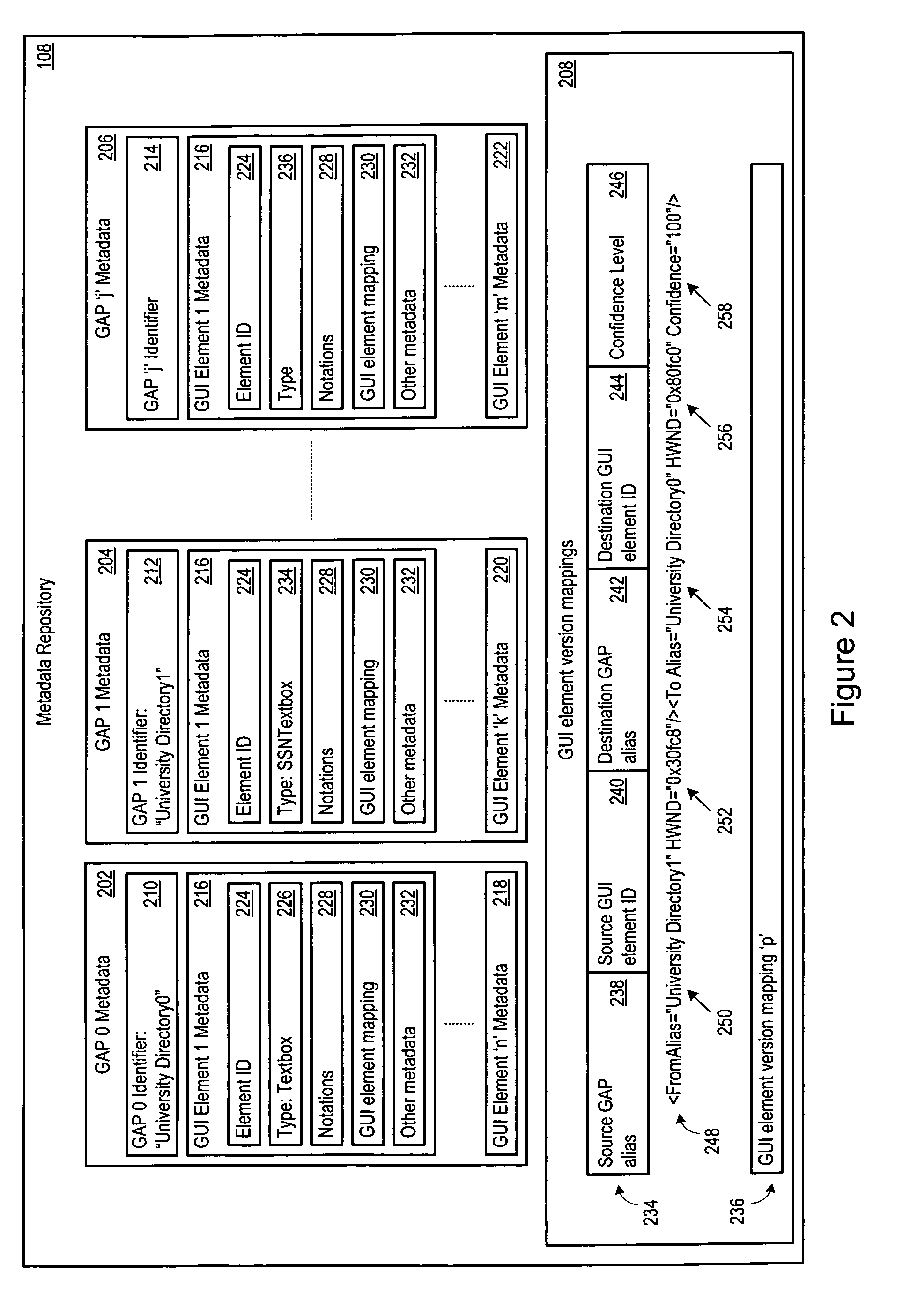Graphical user interface metadata evolution tool
a technology of user interface and metadata, applied in the field of metadata storage, can solve the problems of not being able to adequately test the subsequent revision of the application, the application developer is under pressure to continually add new features, and the complex computer software application that is created
- Summary
- Abstract
- Description
- Claims
- Application Information
AI Technical Summary
Problems solved by technology
Method used
Image
Examples
Embodiment Construction
[0033]FIG. 1 shows one embodiment of a metadata evolution tool architecture 100. The architecture 100 includes an interface 102, a processor 104, a memory 106, and a metadata repository 108. The architecture 100 may communicate with other systems through the interface 102. For example, the architecture 100 may receive requests for metadata information and send responses to those requests through the interface 102. Alternatively or additionally, the architecture 100 may send instructions to the interface 102 to display a prompt at a non-local terminal and may receive responses to the prompt through the interface 102. Alternatively or additionally, the processor 104 may send instructions to display a prompt at display 136 and may receive responses to the prompt. The processor 104 executes the logic stored in the memory 106. The metadata repository 108 receives, retrieves, and stores metadata information processed by the processor 104.
[0034]The memory 106 may include metadata processin...
PUM
 Login to View More
Login to View More Abstract
Description
Claims
Application Information
 Login to View More
Login to View More - R&D
- Intellectual Property
- Life Sciences
- Materials
- Tech Scout
- Unparalleled Data Quality
- Higher Quality Content
- 60% Fewer Hallucinations
Browse by: Latest US Patents, China's latest patents, Technical Efficacy Thesaurus, Application Domain, Technology Topic, Popular Technical Reports.
© 2025 PatSnap. All rights reserved.Legal|Privacy policy|Modern Slavery Act Transparency Statement|Sitemap|About US| Contact US: help@patsnap.com



